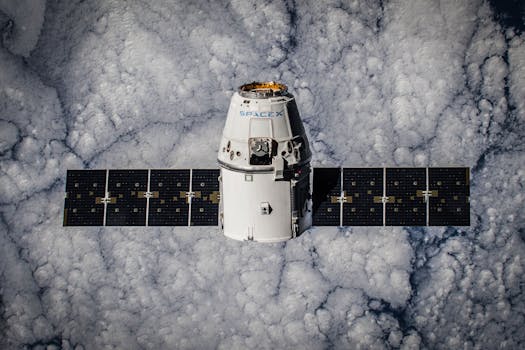
The future of satellite technology: trends and innovations is an exciting and rapidly evolving field, with new developments and advancements being made regularly. The future of satellite technology holds much promise, with advancements in satellite design, launch technology, and data analytics. As the demand for satellite-based services continues to grow, the industry is expected to experience significant growth and transformation in the coming years.
Satellite technology has come a long way since the launch of the first artificial satellite, Sputnik, in 1957. Today, satellites play a critical role in a wide range of applications, including communication, navigation, weather forecasting, and Earth observation. With the increasing use of satellites in various fields, the industry is witnessing a significant surge in innovation and investment.
One of the key trends in satellite technology is the development of smaller, more efficient satellites. Traditional satellites are large and expensive, but newer satellites, such as cubesats and smallsats, are smaller, lighter, and more cost-effective. These smaller satellites are being used for a variety of applications, including Earth observation, communication, and scientific research.
Another trend in satellite technology is the use of advanced materials and manufacturing techniques. New materials, such as carbon fiber and advanced composites, are being used to build stronger, lighter satellites. Additionally, 3D printing and other advanced manufacturing techniques are being used to produce satellite components more quickly and efficiently.
The increasing use of satellite constellations is also a significant trend in the industry. Satellite constellations are groups of satellites that work together to provide global coverage and connectivity. These constellations are being used for a variety of applications, including communication, navigation, and Earth observation.
The integration of satellite technology with other technologies, such as artificial intelligence (AI) and the Internet of Things (IoT), is also an area of significant innovation. Satellites are being used to collect and transmit data, which is then analyzed using AI and IoT technologies. This integration is enabling new applications and services, such as precision agriculture, smart cities, and autonomous vehicles.
In addition to these trends, there are several innovations that are expected to shape the future of satellite technology. One of the most significant innovations is the development of reusable launch vehicles. Reusable launch vehicles, such as those being developed by SpaceX and Blue Origin, are expected to significantly reduce the cost of launching satellites into space.
Another innovation is the use of satellite-based quantum communication. Quantum communication uses the principles of quantum mechanics to enable secure communication over long distances. Satellite-based quantum communication has the potential to provide secure communication for a variety of applications, including financial transactions and military communications.
The development of satellite-based solar power systems is also an area of significant innovation. These systems use satellites to collect solar energy in space and beam it back to Earth as microwave beams. This technology has the potential to provide a new source of clean and sustainable energy.
In conclusion, the future of satellite technology: trends and innovations is an exciting and rapidly evolving field, with new developments and advancements being made regularly. As the demand for satellite-based services continues to grow, the industry is expected to experience significant growth and transformation in the coming years.
The key trends and innovations in satellite technology, including the development of smaller satellites, the use of advanced materials and manufacturing techniques, the increasing use of satellite constellations, and the integration of satellite technology with other technologies, such as AI and IoT, are expected to shape the future of the industry. Additionally, innovations such as reusable launch vehicles, satellite-based quantum communication, and satellite-based solar power systems are expected to provide new opportunities and applications for satellite technology.
As the industry continues to evolve, it is expected that satellite technology will play an increasingly important role in a wide range of applications, including communication, navigation, weather forecasting, and Earth observation. With its potential to provide global coverage and connectivity, satellite technology is an exciting and rapidly evolving field that is expected to shape the future of many industries and applications.




